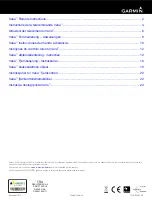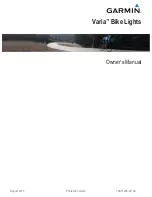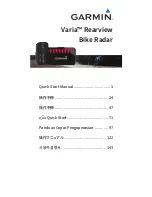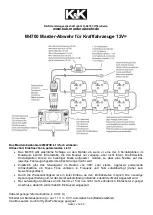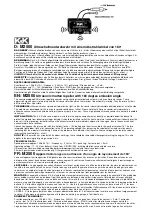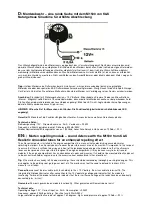
Application:
• Dry contact (pin7 & pin8)
• RS485 bus (pin1 & pin2)
• Wake up signal (pin3 & pin4)
Customer provided cable
Application:
• Dry contact (pin7 & pin8)
• RS485 bus (pin1 & pin2)
• Wake up signal (pin3 & pin4)
Customer provided cable
Install RJ45
resistor cap
on end
module
Saft p/n 773455
Install RJ45
resistor cap
on end
module
Saft p/n 773455
Parallel connected
RJ45
Saft p/n 772518
Startup
Table 5 - Rectifier output settings
Table 6 - Operating LED legend
Note: Refer to 10. Troubleshooting if ABNORMAL
LED is active.
To shutdown the Evolion
®
2.1 kWh
when connected to the application:
• Turn OFF the battery output breaker.
• Push the Evolion’s ON/OFF button
for at least 4 s.
When the Evolion
®
2.1 kWh is OFF,
the LED’s are inactive.
7. Operation
The Evolion
®
is a “smart battery”
and will only allow safe operation.
If a key operating parameter is
exceeded, the Evolion
®
2.1 kWh will
automatically interrupt or restrict
its operation until the key operating
parameter is back within acceptable
limits. In this case the alarm will be
reset and operation will continue
normally. Some alarms are only
resettable by the BMST reset
button or by sending a BMST reset
command on the RS485/Modbus
communication bus.
The Evolion
®
is an RS485/Modbus
slave. Any user configured RS485/
Modbus master equipment can
communicate with the Evolion
®
2.1 kWh. See the Evolion
®
communication user manual for
more details.
The Evolion
®
2.1 kWh is equipped
with an internal heater. It operates
as needed in charge and discharge
mode of operation.
During operation, the LED’s are
active and indicate the Evolion’s
status. See Table 6.
Charging
Make sure that output of the
rectifier is set as 56.0 V ± 0.5%.
It must be set higher than 49.0 V to
allow cell balancing during re-charge.
Temperature Compensated Voltage
(TCV) should be disabled. The Evolion
®
is not harmed by TCV control but the
available capacity will be decreased by
10% for every 1 V below 56.0 V.
• When Evolion
®
2.1 kWh is used
in “floating operation”, for which
re-charge time is not critical, the
charge current can be limited to
16 A per Evolion
®
module.
• When Evolion
®
2.1 kWh is used in
“cycling operation” the maximum
current will depend on the operating
temperature. Refer to Table 7.
• If the maximum allowed charged
current (IMR) is exceeded, the
Evolion
®
2.1 kWh will automatically
regulate its own charge current by
switching to regulated charge. In
that case, the charge can last 24 h.
To start up the Evolion
®
2.1 kWh
when connected to the application:
• Switch ON the rectifier/breaker
output.
IMPORTANT:
Do not use the ON/OFF
button to switch ON the Evolion
®
2.1
kWh when it is connected the power
bus. This may cause a fuse fault.
When the Evolion
®
2.1 kWh is ON,
the LED’s are active indicating its
operational status (see Table 6).
The Evolion
®
2.1 kWh will accept
charge current only when the
temperature is above - 30°C and
below +75°C (- 22°F and +167°F).
Discharging
The Evolion
®
2.1 kWh will discharge
above - 30°C and below +75°C
(- 22°F and +167°F). The maximum
allowed discharge current is a
function of temperature.
IMPORTANT:
If an Evolion
®
2.1 kWh
is subjected to more than 130 A
(5 kW @ 42 V) of continuous
discharge current, a fuse fault will
occur. See Section 10 for fuse
replacement.
The Evolion
®
2.1 kWh will continuously
discharge until one of the following is
encountered.
• The rectifier output power returns,
or
• The battery reaches the minimum
set SOC (0% by default), or
• No discharge current is present
for a set time duration (default is
0), or
• The ON/OFF button is pushed for
at least 4 s, or
• The maximum allowed discharge
current is exceeded, or
• The low voltage disconnect is
reached (default is 42.0 V).
When the end of discharge is
encountered due to a low end
voltage, the Evolion
®
2.1 kWh will
eventually go into sleep mode when
the a low cell voltage is reached.
IMPORTANT:
After the end of
discharge to 42 V, the Evolion
®
can remain in sleep mode for a
maximum of 14 days. If re-charge
does not begin within this time,
the Evolion
®
2.1 kWh
may be over
discharged due to its internal self-
discharge. If over discharged, it will
not startup and will indicate a major
alarm that is not resettable. The unit
will need to be replaced.
Figure 8 - Communication connecting
with parallel modules
Figure 7 - Communication connecting
with one module
NORMAL
slow blink
Floating
fast blink
Charging
steady
Discharging
ABNORMAL
steady
Low health
steady
Warning
steady
Alarm
# Type
Setting
a.
Single level voltage
56.0 Vdc ± 0.5%
b.
Temperature
compensated
voltage control
Disabled or turned OFF.
c.
Maximum
re-charge current
See Table 7 (to
manage thermal
behavior)
d.
Ramp in voltage/
current (soft start)
When the AC powers
ON, output voltage/
current should ramp up
to single level voltage
over at least 1 minute.
e.
Default rectifier
output voltage
When AC powers ON,
if the rectifier controller
is not available or
working, make sure to
set the default rectifier
output voltage to 46 V
maximum.
f.
Low voltage
disconnect (if used) 45 Vdc ± 1%
Cycling Frequency
Maximum allowed
Amps per Evolion
®
(Note 1)
More than 4x per day
16
3x to 4x per day
21
2x to 3x per day
24
1x to 2x per day
32
Less than 1x per day
Less than IMR
*Note 1: The re-charge current can never be above
IMR to avoid charge regulated mode of operation.
Make sure to use the lowest value.
Table 7 - Maximum re-charge current
to manage thermal behavior of Evolion
®
2.1 kWh






